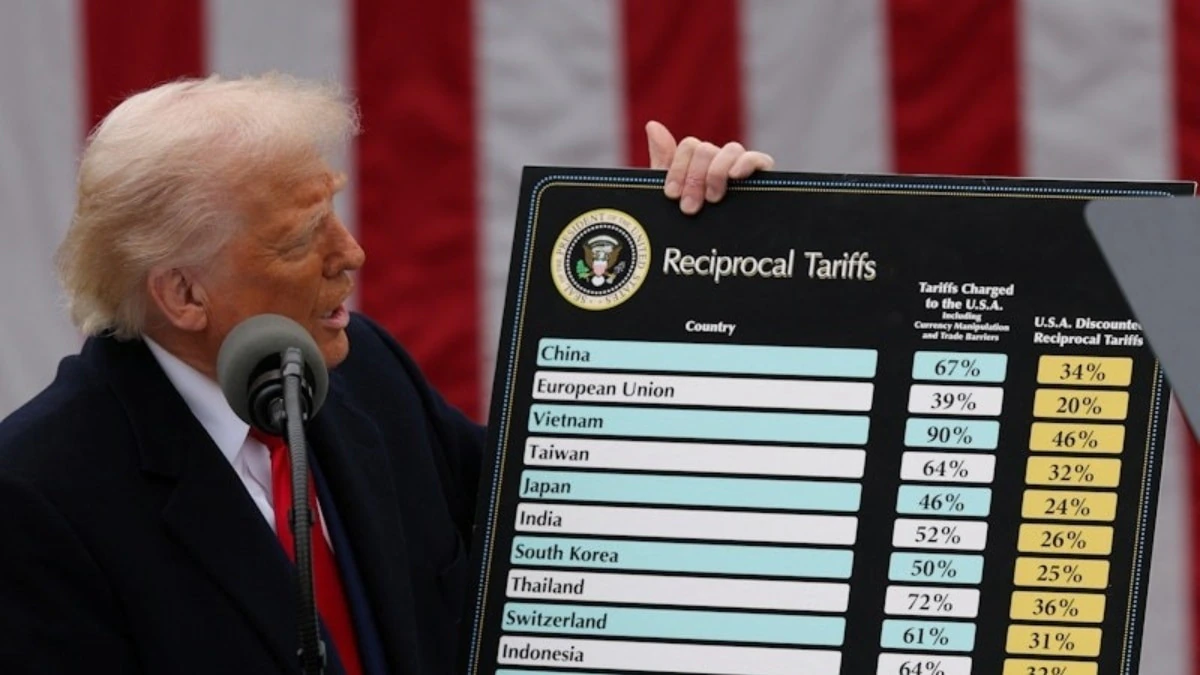US customs authorities began enforcing a sweeping new 10% tariff on imports from dozens of countries early Saturday, marking a seismic shift in global trade policy and intensifying fears of a worldwide economic slowdown.
The levy, announced by former President Donald Trump earlier this week, took effect at 12:01 a.m. ET (0401 GMT) at all U.S. seaports, airports, and customs facilities. The baseline tariff is the centerpiece of Trump’s unilateral overhaul of post-World War Two trade norms, which were built on mutual agreements and negotiated tariffs.
“This is the single biggest trade action of our lifetime,” said Kelly Ann Shaw, a trade lawyer at Hogan Lovells and former White House adviser. Speaking at a Brookings Institution event Thursday, Shaw predicted that the new tariff regime will evolve as countries seek negotiations. “But this is huge. This is a pretty seismic and significant shift in the way that we trade with every country on earth,” she added.
The announcement sent shockwaves through global financial markets, wiping out $5 trillion in market value from S&P 500 companies by Friday’s close—a record two-day loss. The Dow Jones and Nasdaq also suffered steep declines, while commodity prices plunged and investors poured into safe-haven government bonds.
Wall Street’s rout is the steepest since the March 2020 pandemic-driven selloff and has reignited fears of a looming global recession.
Who’s Hit — and Who’s Not
Among the first countries affected are Australia, Britain, Colombia, Argentina, Egypt, and Saudi Arabia, which now face the immediate 10% tariff. A U.S. Customs and Border Protection bulletin issued to shippers initially caused confusion, suggesting no grace period. However, a revised bulletin confirmed a 51-day grace period for goods already in transit before the Saturday deadline. These shipments must arrive in the U.S. by May 27 to avoid the new duty.
The policy includes significant exemptions. Goods such as crude oil, pharmaceuticals, semiconductors, petroleum products, uranium, titanium, and lumber—representing roughly $645 billion in 2024 imports—are excluded from the tariff. Many of these sectors, however, remain under review for possible national security-related tariffs.
Products already covered by separate national security duties—such as steel, aluminum, automobiles, trucks, and auto parts—are also excluded.
Higher Reciprocal Tariffs Coming Next
The 10% baseline tariff is only the first phase. Beginning Wednesday, the administration will implement a set of “reciprocal tariffs” ranging from 11% to 50%, targeting countries based on the duties they impose on U.S. goods.
Under the new schedule:
-
European Union imports will face a 20% tariff.
-
Chinese goods will be hit with an additional 34% duty, raising total U.S. tariffs on China to 54%.
-
Vietnam, which benefited from supply chain shifts away from China during Trump’s first term, will face a 46% tariff. Hanoi has agreed to open discussions with Washington following the announcement.
-
Canada and Mexico are exempt from the new duties due to existing 25% tariffs tied to the U.S. fentanyl crisis for non-compliant goods under the USMCA rules of origin.
Trump’s move has sparked both praise from protectionist trade advocates and criticism from economists who warn of inflationary pressures and disrupted global supply chains. Analysts say the policy could act as a de facto tax on U.S. consumers and businesses, compounding economic risks at a time of fragile global recovery.
As the U.S. enforces its most aggressive trade action in decades, countries around the world are expected to respond, potentially setting off a new era of retaliatory tariffs and trade realignment.



